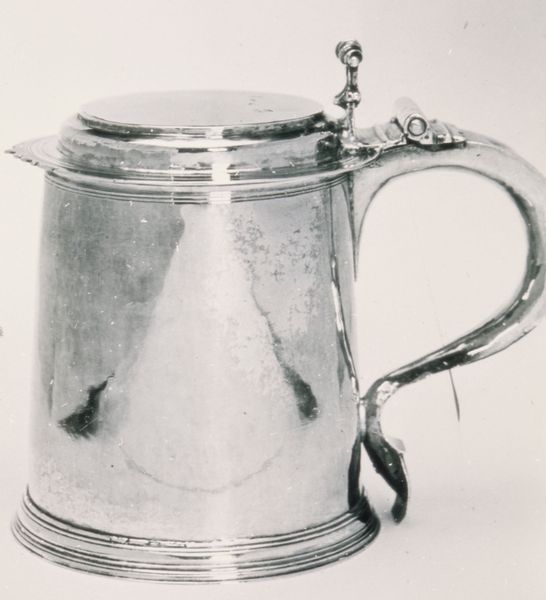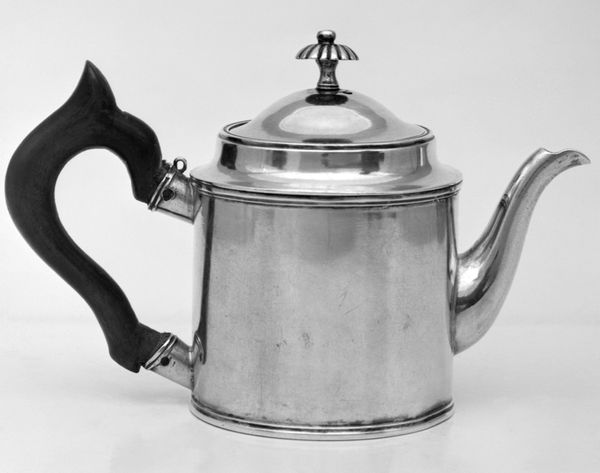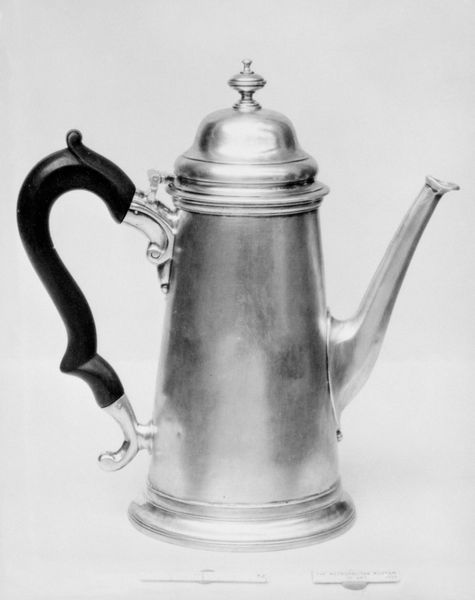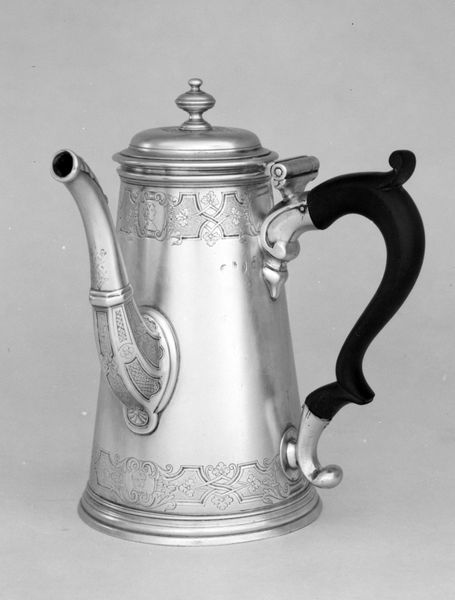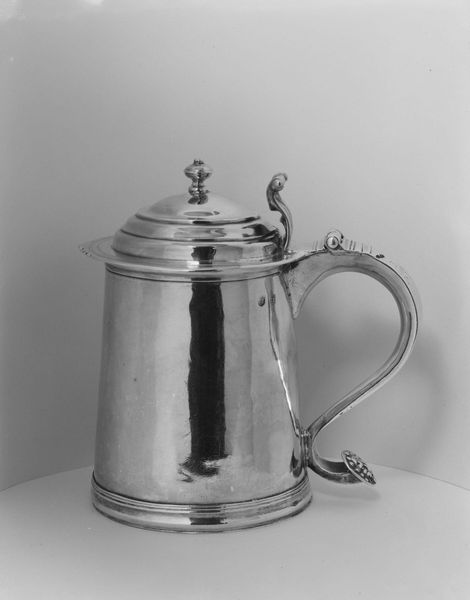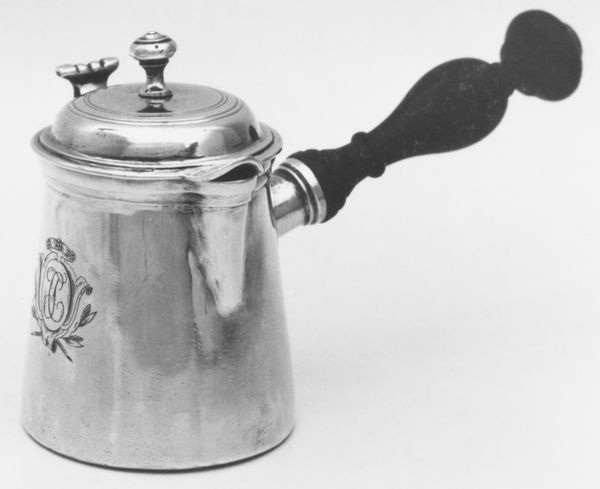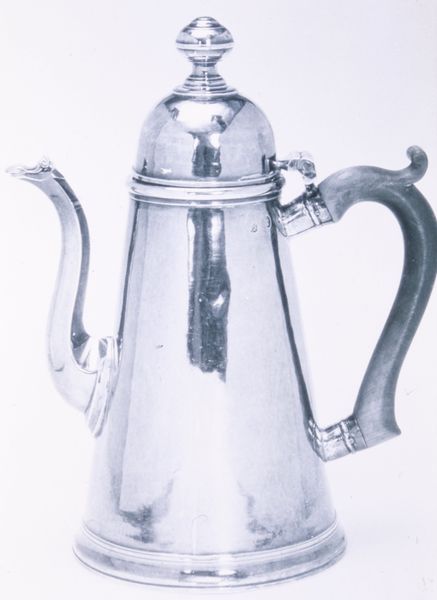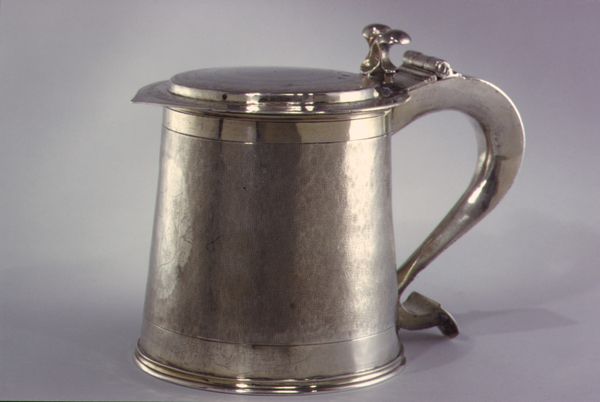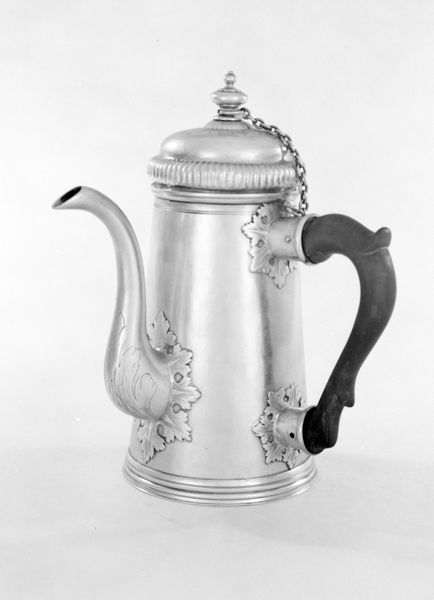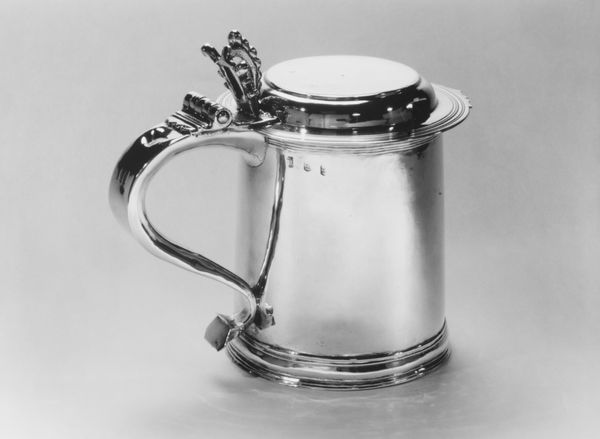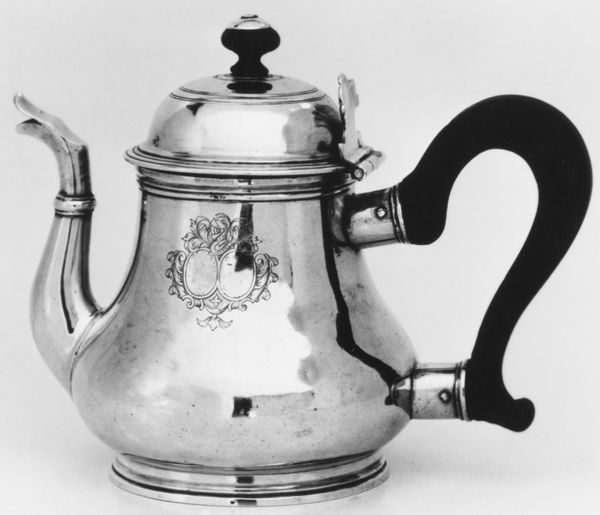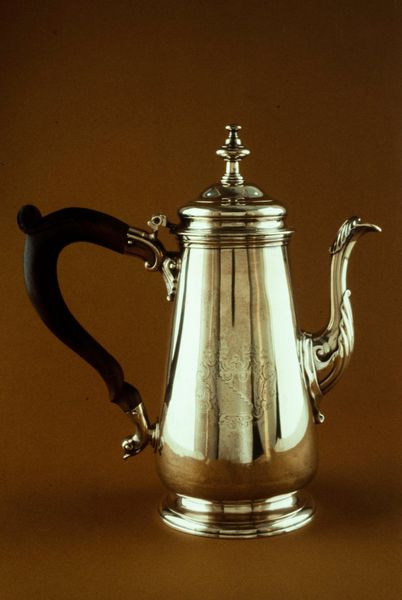
silver, metal, photography
#
portrait
#
silver
#
metal
#
sculpture
#
photography
#
decorative-art
#
statue
Dimensions: 5 1/4 x 7 3/4 x 3 3/4 in. (13.34 x 19.69 x 9.53 cm)
Copyright: Public Domain
Editor: So this is *Argyle*, a silver teapot created around 1778 or 1779 by Robert Makepiece I. It’s such a functional, everyday object, but also really quite elegant. I’m struck by the contrast between the gleaming silver and the dark handle. What historical factors were at play that influenced the creation of this type of piece? Curator: Well, the late 18th century saw a rise in what we might call “conspicuous consumption”. Silver, like this, was expensive and signified status. Notice the crest on the side? Owning something like this was a public declaration of wealth and taste. It spoke volumes about where you sat in society. Think about tea, too. It wasn't just a drink, it was a ritual, deeply intertwined with social and even political power. Editor: A public declaration, that's fascinating! So, by owning and using this teapot, people were essentially performing their social role? How would its maker be viewed at that time? Curator: Absolutely. Silver-smiths like Makepiece occupied an interesting space. They were artisans, but also responded directly to the demands of the upper classes. A successful silver-smith, one catering to fashionable trends, would become quite well-known. It's a reciprocal relationship: they shaped aesthetics, and in turn, their success was dictated by societal pressures and aspirations. Do you see how the form follows those societal pressures? Editor: I do! It's no longer just about function; it’s about displaying status and participating in social rituals. It makes you consider everything we use, and the role consumerism has played throughout history. Curator: Precisely. Something as simple as a teapot gives us a glimpse into the social, economic, and political climate of its time, the motivations of people, and who controlled it all. Editor: I never thought about a teapot holding so much historical context, so this has definitely altered how I will view utilitarian art. Curator: Me too! This process reminds me to reconsider objects of luxury within history.
Comments
minneapolisinstituteofart almost 2 years ago
⋮
Argylls, which are said to have been named for the duke of Argyll, who disliked cold gravy, were first introduced in the 1760s. The sauce is kept warm by an inner liner filled with hot water. A hinged flap separates the hot water from the gravy and the spout is usually set low on the body so that fat in the sauce will rise to the surface and is not poured from the vessel.
Join the conversation
Join millions of artists and users on Artera today and experience the ultimate creative platform.
